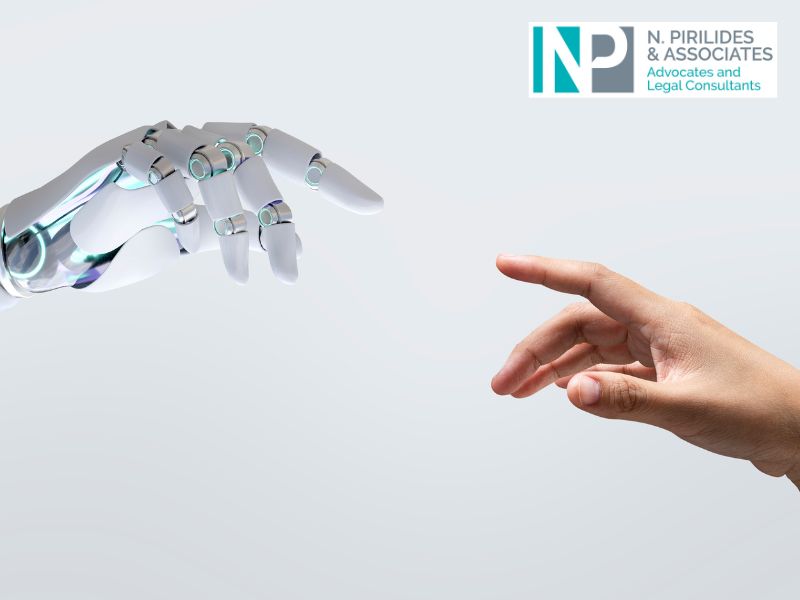Copyright challenges in the age of Artificial Intelligence

By: N. Pirilides & Associates LLC
Artificial intelligence (Al) is the simulation of human intelligence processes by machines, especially computer systems. In business, artificial intelligence has a wide range of uses. In addition to being a new tool in the tech world, AI has proven capable of completing tasks only humans could do until very recently.
Nowadays laws that have long protected people and their intellectual property are proving inadequate when AI is involved. The impact on ownership and copyright in AI-generated content is a topic of debate and legal challenges because of the uncertainties around human involvement and training data.
The data that generative AI is trained on includes many works that are already protected under copyright laws and that, in most cases, were included in the training of the AI system. Copyrighting Al work is to a certain extent unreasonable because any output is dependent and influenced by the data that the model was trained on.
On 14 June 2023, MEPs adopted Parliament’s negotiating position on the AI Act. The talks between EU countries shall begin on the final form of the law. The aim is to reach an agreement by the end of this year. What the Al Act says is that AI systems that can be used in different applications are analysed and classified according to the risk they pose to users. While the EU’s AI Act is the closest EU countries have gotten to regulate AI use, specific laws for copyrighting AI-generated content are yet to be established and until now it might just be dealt with on a case-by-case basis.
Approach in the US
Thaler v. Perlmutter was a case challenging copyright’s human authorship requirement in the context of a work produced by a generative AI program. This is one of many lawsuits surrounding copyright issues in generative AI and how this interacts with copyright’s human authorship requirement. In this case, the US District Court refused a copyright for an AI-generated image. In her decision, Judge Howell wrote that copyright has never been granted to work that was “absent any guiding human hand” adding that “human authorship is a bedrock requirement of copyright”.
The case of Burrow-Giles Lithographic Co. v. Sarony acts as guidance about what is considered to satisfy the human authorship requirement. In this Supreme Court case, it was determined that photographs qualify as copyrighted works created by "authors". Even though a camera is a mechanical device that captures what's in front of it, the resulting photograph still reflects the original creative insight of the photographer. This is vastly different from a self-learning algorithm that can make its own choices.
Approach in the UK
Under English law, specifically the Copyright, Designs and Patents Act 1988 (“CDPA”), artistic works created by a computer can benefit from copyright protection (although there is no copyright registration system in the UK).
Section 178 of the CDPA provides that a “computer generated” work is one that is generated by a computer in circumstances where there is no human author of the work. The “author” of a computer-generated work is the person who made the necessary arrangements to create the work. The UK approach therefore separates authorship and creativity. The present position in the UK shows that AI-generated works can be protected by copyright, which is distinctly different to the America’s position.
Considering that, as of today, there are no copyright laws that specifically address AI-generated content, and the situation is still solved on a case-by-case basis in court, people may need to consider how they are using generative AI in the process behind their creative work to avoid copyright issues in the future.






